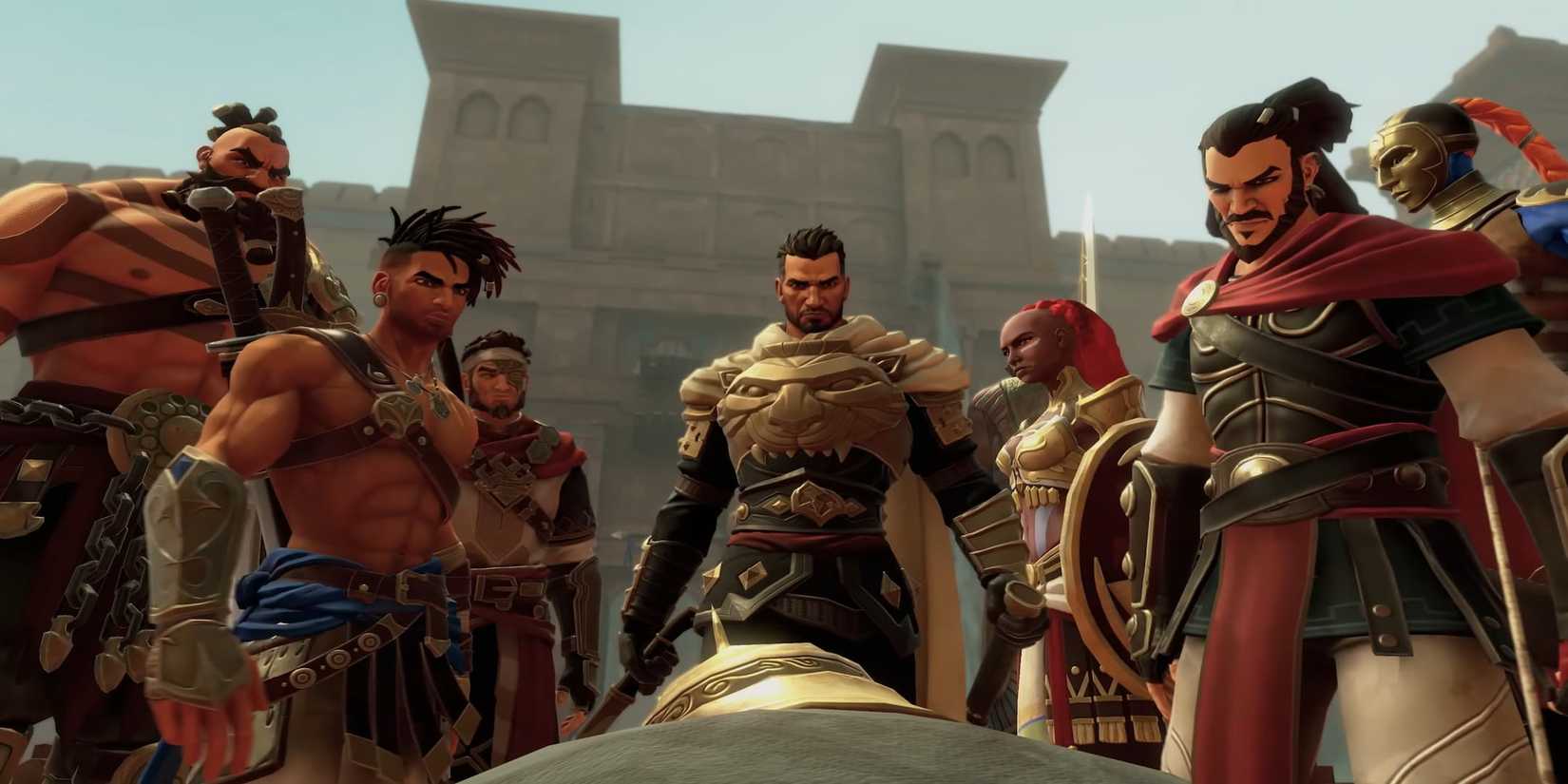Netflix has become known as a platform that prioritizes quality, focusing on big-budget features and in-house originals with some of the most recognizable names in cinema. However, this has not always been the case, and the platform has also built up a substantial library of B-movies among its early original content. Viewers looking for cinema a bit off the beaten path can find some hidden low-budget gems in various genres throughout the platform.
After a deep dive into the Netflix catalog to look at some of the less-discussed originals with a smaller budget and smaller productions tucked away on the streaming service. These are the 15 best B-movies on Netflix.
15
‘Mako’ (2021)
Wanting to explore the infamous sunken Elsalam ship, eight businessmen hire a team and embark on an underwater expedition to create a documentary about the craft. However, when they enter the deep, they are confronted by all manner of threats, including a giant shark that threatens to swallow up the entire crew. Mako is a bit of an oddity in the shark genre, originating from Egypt rather than the West, which has traditionally dominated the niche B-movie shark space.
Shark Bait
Mako was poorly received on its release, and much of the surrounding critique stating it presented a bland story with insufficient shark action is warranted. However, for those shark film fanatics who will watch everything and anything with the ‘terror of the deep,’ it is still worth a watch. This is particularly true for those seeking more international cinema that tackles the micro-genre of shark horror.
14
‘Choose or Die’ (2022)
After unearthing a retro ’80s horror game, Isaac and Kayla discover that the game is beginning to seep into their reality, causing death and chaos. Becoming aware of the heightened stakes of the game, with the choices presented becoming more extreme, the duo races to find the source of the anomaly in the hopes of stopping its effects.
Video Games Kill
Toby Meakins’s Choose or Die certainly has that lower-budgeted charm, leaning into the nostalgia of text-based games and the retrospective humor surrounding the fear that the medium would corrupt the youth with satanic messaging. Moreover, there are some legitimately scary moments where others find themselves unwilling contestants in a game with ghastly and gory results. Still, the movie is a bit of a dud, tripping itself up in the final act and having a few groan-worthy twists. If you want to tune out, have some fun, and enjoy the odd bit of bloody chaos, Choose or Die is an excellent choice for a movie night if you approach it with lower expectations.
13
‘The Violence Action’ (2022)
Based on the manga of the same name, The Violence Action follows a young girl named Kei, who leads a double life as an assassin while attending college. Keeping the upbeat tone and over-the-top nature of its source material, the action flick follows Kei as she navigates various layers of the Yakuza, all while trying to balance her personal and academic life.
High Octane Silliness
The Violence Action is, in part, a lesson in working within a budget and realizing sometimes you need to cut back to ensure a more defined cinematic experience. In short, this one is rough around the edges and sometimes struggles to hide its limitations. Still, the action here is gratifying and explosive, the performances perfectly fit their comic counterparts, and the movie charges forward at an exciting pace. If your idea of fun is a kawaii (cute) character kicking some serious a**, then The Violence Action is an ideal watch.
12
‘The Block Island Sound’ (2020)
Mysterious and disturbing events are happening around the island of Block Sound, and in the middle of them is a fisherman, Tom Lynch, who is dealing with personal demons. The events agitate his already fragile psyche, and he becomes paranoid of a mysterious force in the sea that is potentially behind the occurrences throughout the town. As he begins to lash out violently, the lines between truth and reality blur as others desperately try to help him while figuring out the source of the tragedy befalling Block Island.
Hearing Is Believing
Kevin and Matthew McManus’s The Block Island Sound suffered a similar fate to many of the earlier Netflix Original movies, failing to strike the intended note with the audience and faltering in its execution. However, this one stands out in how well scripted, acted, and conceptualized it is, with most of the movie encased in a fascinating mystery. Actor Chris Sheffield also gives a memorable performance as Tom, delivering a believable descent into Lovecraftian-inspired madness.
11
‘Circle’ (2015)
The sci-fi psychological horror-thriller Circle follows a group of 50 strangers who awake in a mysterious room and are tasked with playing a game. In the blackened space, they must stand in their designated area, unable to move, and choose another contestant to be ‘eliminated,’ which causes them to disappear, presumably killed. As the numbers start to whittle down, people become more desperate while others try to figure a way out of the predicament.
360 Degrees of Mystery
A clever yet straightforward mash-up of genres, Aaron Hann & Mario Miscione’s 2015 film Circle unfolds more like a social experiment than a horror movie. Still, those who love to see people go up against each other and examine what they do under extreme circumstances will find the film deeply engaging. It may be a bit of a ‘one-trick pony’ that hides in ambiguity to avoid leading to more significant questions (how they got there, who is making them play, etc.). Still, it is delightful as a character study and a short piece of suspenseful cinema, running under 90 minutes.
10
‘Girls With Balls’ (2018)
This French-Belgian dark comedy by director Olivier Afonso follows the members of an all-girls volleyball team, “The Falcons,” who find themselves stranded in the middle of nowhere after their van breaks down. Things become more complicated when they find themselves hunted by all manner of backwoods sociopaths, and the team has to band together to use their athletic prowess to defend against the attackers.
Balls to the Wall Horror Comedy
Girls With Balls is a hidden gem in the Netflix catalog, presenting a giddy mix of horror, blood, gore, and dark humor. At the same time, the French language film does lean big into genre clichés, and lacks much depth beyond the chaos it presents. This has given the movie a love/hate relationship with horror fans. Still, it is an undeniably perfect popcorn flick for those who like horror-comedy that delivers a simple plot to get to the ‘gory bits.’ Moreover, the film boasts a strong cast, shucking the last girl trope of the slasher genre and presenting an army of elite athletes fighting back.
9
‘Manson Family Vacation’ (2015)
Two brothers, Nick and Conrad, have grown estranged due to the carefree life of one, while the other has settled into the role of husband and father. They decide to take a road trip together to reconnect. As the two begin to rebuild their relationship on a tour of Manson’s notable sites, Conrad confesses that he believes that he is the son of Charles Manson and that he is going to connect with his followers to speak to his father.
Manson Family Values
A lo-fi comedy/drama, The Manson Family Vacation, was partly produced by Mark and Jay Duplass (Jay wrote the script and stars in the film). Those familiar with the brothers’ other works, either as producers or writers, such as Jeff Who Lives at Home, The Overnight, and The One I Love, should have an idea of what they are getting into, as their signature dry and awkward humor is the driving force in The Manson Family Vacation. Don’t expect a laugh-out-loud comedy, but its subtle approach to humor, combined with an exciting family drama, makes the movie worth checking out.
8
‘Creep’ (2014)
Looking for a gig, videographer Aaron answers an online ad for work filming a video diary for a client. Once he arrives, he meets the eccentric and off-putting Josef, who claims to be dying and wants to leave behind a memoir for his family. However, as the filming progresses, Josef becomes more erratic, and his claims of illness become questionable, as the video diary turns into a means to harass Aaron and make him as uncomfortable as possible.
Starring Mark Duplass (who was also involved with the previously mentioned Manson Family Vacation), Creep is easily the most beloved of the actor’s works. This is due to the interesting take on the found-footage genre, where Duplass puts everything into his performance (much of it impressively improvised) to convince the viewer his character is both malicious and unhinged in a cold, calculating way. It is challenging to prepare viewers for his portrayal in Creep. Still, if you enjoy moments of awkward dark comedy with a layer of thick uneasiness, you have to experience Duplass’s portrayal of the troubled Josef.
7
‘Bad Trip’ (2020)
Part hidden camera comedy and part scripted, Bad Trip follows two best friends, Chris and Bud (played by Eric André and Lil Rel Howery), who go on a road trip so that Chris can connect with an old crush. The trip becomes a game of cat and mouse, though, when they are hunted down by Bud’s sister, Trina, played by Tiffany Haddish, for stealing her car.
It’s Just a Prank, Bro
Bad Trip will be a slightly contentious inclusion in this list, as Eric Andre’s comedic stylings, best known for The Eric Andre Show, are somewhat divisive. Even as the movie offers more narrative and a wonderfully comedic performance from Tiffany Haddish, the same awkward, dangerous, and confrontational humor exists throughout the film. Still, those who love the prank format will find the absurd set-ups hilarious, while those looking for a more straightforward comedy will appreciate the scripted elements. Go in expecting crass, silly, and awkward, and the movie will deliver.
6
‘Cam’ (2018)
An ambitious cam-girl named Alice has garnered a decent following, but as the emphasis is put on more salacious content, she begins to feel the pressure to surpass her rival. When her account appears to be seized by a duplicate willing to take those next steps, Alice’s mental state slowly diminishes, as she sees her doppelgänger climb to fame while stealing her source of revenue.
Losing Oneself Online
Cam works both as a chilling horror film about a character declining under extreme circumstances and as a social commentary on the perils of online life. In a minimalistic setting with a small cast, Cam also has an oppressive, claustrophobic atmosphere, forcing the audience to focus on Madeline Brewer’s portrayal of a troubled and scared Alice. This one won’t be for everyone, as it’s split on Rotten Tomatoes, with 93% fresh with critics and 53% with the audience, showing it is more of a critical darling than a favorite among the horror fandom. Still, those who appreciate a good slow burn and socially conscious horror will enjoy Cam.


























